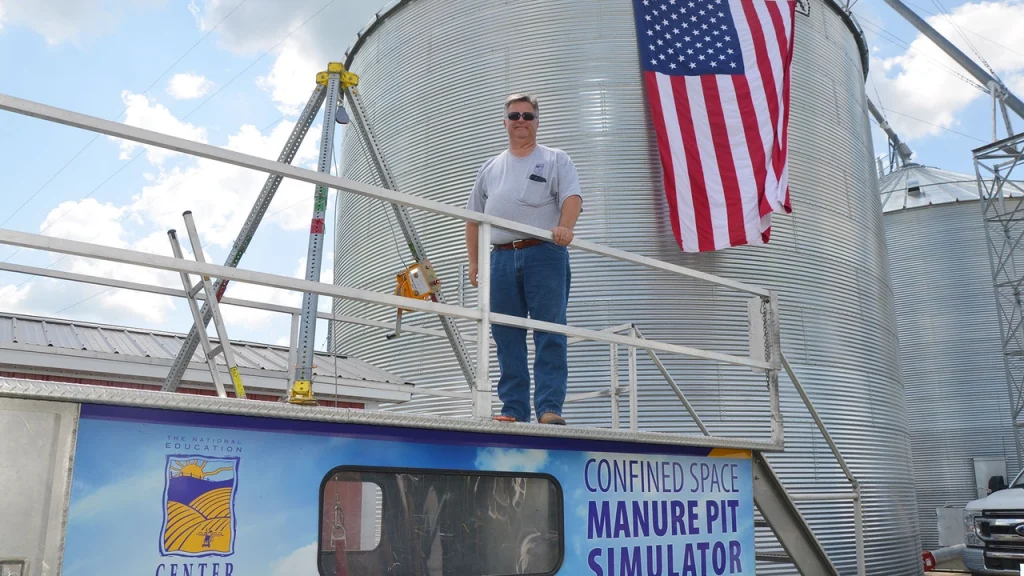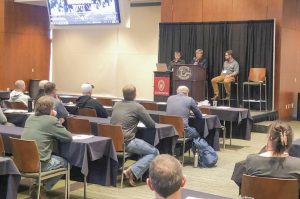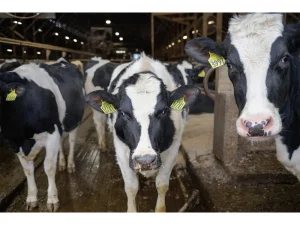
Fatal incidents often involve multiple victims, as people may try to rescue others without using proper safety precautions and equipment.
The lives of two young men abruptly ended June 14 after they fell into a manure tanker and succumbed to gases at a farm in Kirkland, N.Y. It’s another awful reminder of the dangers in working with manure.
Even if you are young and in good shape, you are no Superman when it comes to fending off toxic — and sometimes deadly — hydrogen sulfide gas, says Dan Neenan, director of the National Education Center for Agricultural Safety (NECAS). “It can kill you in as little as four breaths,” he adds.
As growers prepare for fall manure application, Neenan asks, “Is your life worth $450? That’s about what a four-gas monitor costs, which can be directly attached to yourself, or can be installed in the barn or near manure storage.”
Manure breaks down to produce gases such as carbon dioxide, hydrogen sulfide, methane and ammonia, which can all be poisonous at certain levels, but hydrogen sulfide is the most toxic.
“Manure is dangerous 24/7, 365, but it becomes more dangerous when you agitate it,” Neenan says. “Toxic gases and potential entrapment can make manure pits deadly.”
Eleven accidents involving livestock waste storage facilities were reported in 2022, eight of which were fatalities. Between 1975 and 2021, 486 incidents were reported, and 288, or 59%, were fatalities.
“You can’t see the gas. You can smell it, but it’s the smell of manure,” Neenan explains. “When you first walk in you think, ‘Oh, that stinks.’ But then after you’ve been there maybe 20 seconds to a minute, you start to think, it’s not that bad. Well, it’s not that the conditions are getting any better. The hydrogen sulfide deadens your olfactory senses or your sense of smell. So, it lures people into thinking it’s getting better, when, in all reality, it’s not.”
A four-gas detector will start alarming at 35 parts per million. “When folks are agitating their pits and those bubbles are coming up, you can get readings of more than 600 parts per million, and that’s where you will stop breathing within four breaths,” Neenan says.
Urge to help can be deadly
Fatal incidents often involve multiple victims, as people may try to rescue others without using proper safety precautions and equipment.
On Aug. 10, 2021, three brothers — all in their 30s — lost consciousness and died while performing maintenance in a manure pit on a farm in western Ohio. Each tried to save each other, but they succumbed to gases.
Five members of the same family died from asphyxiation due to gas in a Michigan manure pit in 1989. A 65-year-old dairy farmer, his 28- and 37-year-old sons, 15-year-old grandson, and 63-year-old nephew climbed into the pit one after the other, trying to save family members who had been rendered unconscious.
Five people, including 9- and 11-year-old girls and their parents, died in a similar fashion in Virginia in 2007. A Pennsylvania farmer and his 14- and 18-year-old sons perished in their manure pit in 2012.
“When the first one goes in and becomes unresponsive, the second one goes in thinking, ‘I can help,’” Neenan says. “You simply cannot hold your breath long enough to be able to do that. The best thing to do, even though it’s counterintuitive, is to stay outside and call 911, wait for the fire department and point them where to go.”
Hydrogen sulfide, much like carbon monoxide, lands on lung receptors blocking oxygen. “That would need to be blown off under pressure, like in a hyperbaric chamber, which there are not many in the U.S.,” Neenan says. “Having that four-gas monitor available to you, charged up, calibrated and ready to go can be a lifesaver. In New York, some of the county Farm Bureaus have purchased gas monitors people can check out the day they are agitating and pumping.”
Gypsum makes it worse
Neenan, who recently hosted both grain and manure safety talks and demonstrations at Michigan’s AgroExpo, says he’s seeing a couple situations making manure even more risky.
“On the East Coast, a lot of farmers are using gypsum for bedding,” he says. “It’s drywall scrap farmers love for bedding to improve udder health. They can go to construction sites and pick it up for free, and contractors like it because they don’t have to pay to have it removed. But when gypsum bedding gets scraped into the manure pit, it skyrockets the hydrogen sulfide level, and we’ve seen some deaths because of it.”
In the Midwest, there’s a different problem. “We have problems with exploding poop,” Neenan says. “In a below-grade manure pit, fans are running to blow dangerous gases out. But on top of the solids and the liquid, there’s sometimes 2 to 3 feet of bubbled-up foam bringing it above the slats. The fans aren’t able to move any of those gases because they’re suppressed underneath.
“Farmers have been taught to agitate the foam back into the slurry before pumping. Well, when you agitate it, you break the seal of the foam, and all those gases — one being methane — come up, and it catches the pilot light on a heater and it can produce a catastrophic explosion.”
The University of Minnesota has a grant to study this situation. But in the meantime, Neenan advises farmers to pump without agitation.
“Yes, you’re going to get a whole lot more solids, but pump it until it gets 3 feet down under the level of the floor,” he says. “Then the pit fans can take those gases and blow them out into the atmosphere, instead of coming up into the building.”
Manure pit simulator
Sponsored by Nationwide and provided by NECAS, a manure pit simulator travels the country to help train first responders, farmers, ranchers and others on the importance of confined space safety and proper rescue techniques should a manure pit accident occur.
Loaded on a 20-foot trailer and containing 150 gallons of water, the simulator gives participants the opportunity to work through different scenarios in various roles. Trained and experienced industry professionals travel with the simulator to teach the procedures for safely entering a manure pit to perform rescue operations in low-oxygen situations.
Educators also stress the importance of air-quality monitoring before, during and after rescues; the proper use of a self-contained breathing apparatus (SCBA); harnessing; rope rigging for below-grade rescues; and the use of a rescue tripod.
“They have to wear self-contained breathing apparatuses, be tested to wear it and not have beards to ensure a tight seal,” Neenan says.
The tripod has a mechanical winch with a 2-to-1 mechanical advantage. “Somebody could pull me out of there with one hand cranking,” he says.
When around manure, Neenan says, “Think about what you’re doing. Think about the dangers and what you can do to be safe. In the big picture, a four-gas monitor is not that expensive. If that’s the one step you take this year to keep yourself safer, it would be money well invested.”
You can now read the most important #news on #eDairyNews #Whatsapp channels!!!
🇺🇸 eDairy News INGLÊS: https://whatsapp.com/channel/0029VaKsjzGDTkJyIN6hcP1K

























